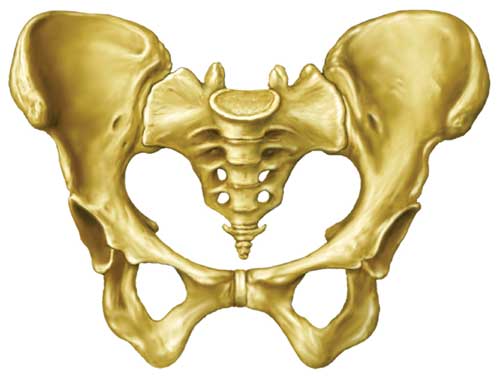Earlier this month, EMJ published a consensus statement containing 9 recommendations on the prehospital management of pelvic injuries. The consensus meeting was held in March, 2012. I am very pleased with the recommendations this paper provides, so I'll take a moment to quickly summarize what they came up with. I highly recommend obtaining the full-text and having a look for yourself.
The 9 recommendations are as follows:
1) A pelvic binder is a treatment intervention rather than a packaging intervention and should be applied early.
- The authors then state, "If the patient is hemodynamically compromised with a significant mechanism suggestive of a pelvic injury, a pelvic binder should be applied."
2) A select group of patients may not need a binder.
- The authors state that pelvic trauma may be excluded from a select group of patients - namely, those with hemodynamic stability (undefined) and a "normal" GCS (GCS > 13).
- Within this recommendation, the authors go on to agree that "springing the pelvis" is a very poor indicator of pelvic injury - the sensitivity and specificity being 59% and 71% respectively.
3) No one pelvic binder device can currently be recommended over another.
- The evidence supporting one device over another is almost exclusively anecdotal, so no recommendations can be made here.
- However, the authors recommend that the ideal device should:
- Be easy to apply
- Not cause further harm.
- Allow radiological and surgical intervention without the need for removal.
- The authors state, "the two devices with the strongest evidence base are the SAM pelvic sling and the T-POD devices".
4) Adequate training must be provided to avoid misplacement of devices.
- The authors state that, although there is some evidence out there of devices being incorrectly placed, this is likely due to improper training rather than design fault.
5) Associated femoral fractures should also be reduced.
- Hallelujah! Can we finally put the myth to rest that femur fractures with associated pelvic injuries can not be reduced?
- Side note: the authors advise against using devices that exert pressure using traction against the pelvis in the midline (e.g. the sager device).
6) Patients should not be log rolled or transported on a spinal board.
- Maybe it's the controversial side in me that likes this recommendation so much, but regardless of the reason, the authors state "Logrolling only has a place in turning a patient onto their back to allow access to their airway. There is no place for routine logrolling in blunt trauma victims."
- The authors then go on to say, "No patient should be log rolled onto or off a spinal board with a pelvic injury."
7) The use of pelvic binders is associated with the risk of low pressure skin necrosis.
- Not much to say on this one. It is self-evident and reasonably described in the literature.
8) The pelvic binder should be placed next to skin.
- In this discussion, the authors expose that there is zero evidence that placement over clothes provides the same degree of stabilization or risk of pressure damage. They state that it should also be placed directly over skin to avoid the need to remove the splint on arrival to the hospital to remove clothes at that time. Completely agree here.
9) A pelvic binder should be applied prior to extrication.
- The authors openly state that there is no hard evidence to support this guideline. The recommend this simply due to the fact that handling the patient prior to splinting has been described to disrupt clots that have already formed. This is reasonable.
So there you have it! What do you all think of all this? Leave your thoughts in the comments!
Bibliography:

No comments:
Post a Comment